After 15 years working as the fourth remote member of the Green Bank Interferometer (GBI), the 45-foot claimed a permanent home at the Observatory. In this photo, the 45-foot was engaged in solar observations, watching the Sun all day to provide up-to-the-minute information about sudden changes in its output.
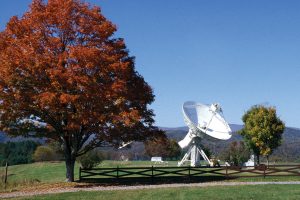
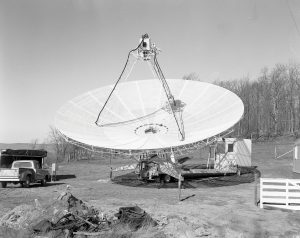
Green Bank’s 42-foot portable telescope
Through 1976, this 42-foot portable radio telescope served as the fourth, remote member of the Green Bank Interferometer (GBI), the testbed for the Very Large Array (VLA). The 42-foot’s trailer integrated the telescope’s donut-shaped drive and a small control room, and during moves, it carried the disassembled dish as stacked panels. This photo was taken in 1967, when the telescope was assembled and tested in Green Bank.
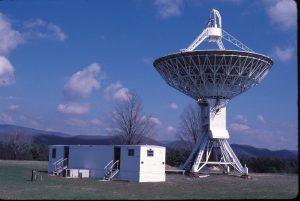
Green Bank’s 45-foot telescope retires
At the conclusion of 15 years of a successful nomadic phase as a fourth remote telescope for the Green Bank Interferometer (GBI), the 45-foot settled on piers at Green Bank in 1988. NASA converted it into a tracking station for orbiting satellites. Now, it’s been turned into a dedicated solar telescope.
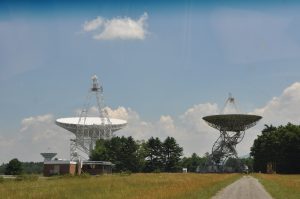
85-3 and the GBT
Recent photo of the Robert C. Byrd Green Bank Telescope and the 85-3, the third 85-foot telescope to join the Green Bank Interferometer, NRAO’s first array, built in 1964. The control room for the GBI is the brick building to the left of the 85-3 and houses the correlator and data recording devices for the GBI.
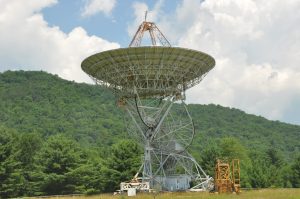
85-2 in Summertime
The second 85-foot telescope, which was part of the Green Bank Interferometer, was assembled here in 1964. There was a road constructed between the three telescopes, so that they could be moved closer or further away from each other with ease.
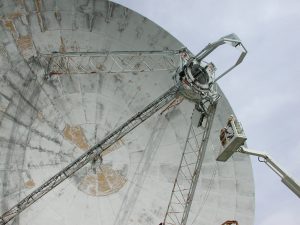
Inspected the 85-3 in Green Bank
Telescope technicians ride the lift up to the prime focus of the 85-3, an 85-foot radio telescope in Green Bank. At the prime focus is a receiver that needs changing out. From 1989 until 2011, the 85-3 was used for monitoring of pulsar timing and brightness for scientists at Princeton, Berkeley, and Oberlin College. About 35 pulsars were observed every day, at frequencies of 610 and 327 MHz.





